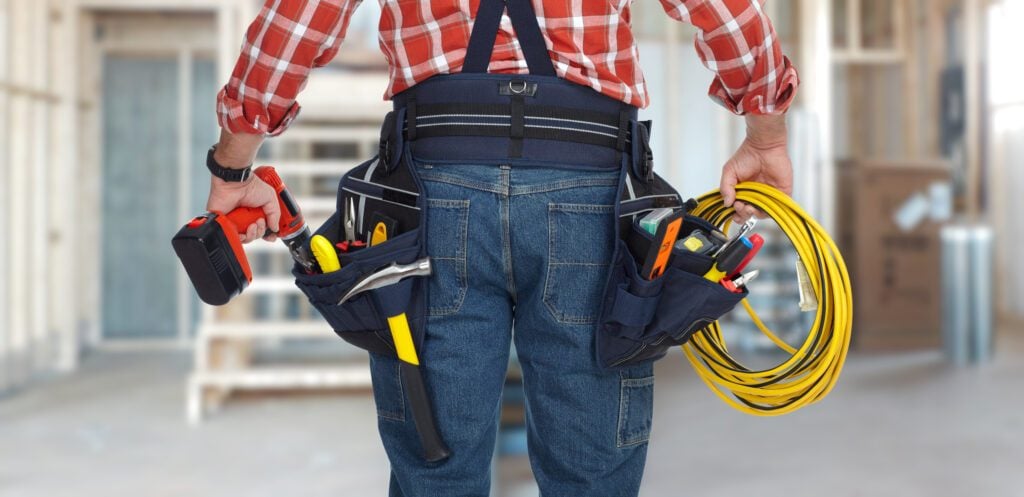One of the primary necessities in a house is electricity to power machines needed for day-to-day activities. However, as valuable as electricity is, it could pose several hazards to the people living within the home. Therefore, the possibility of electrical accidents shouldn’t be swept under the rug.
The chances of any electrical hazards happening can be significantly reduced if proper care is taken while handling electrical cables and when safety guidelines are strictly followed.
That said, here are seven safety tips to practice when working with electrical cables at home:
- Follow The Instructions On Electrical Appliances
Most electrical appliances have user guidelines and manuals. You can refer to these manuals for the right directions on how to properly use the electrical appliance and its dos and don’ts. It is important that you understand the instructions as it helps improve your appliances’ performance and ensure your safety. According to Cable Pro, you can avert a lot of dangers by strictly following the manufacturer’s instructions.
- Do Not Overload Electrical Outlets
Overloading an electrical outlet can cause problems to arise when the outlet draws more power than the circuit can deal with. As a result, there could be an explosion or other damage to the outlet, the appliance, or the user.
This is why you shouldn’t use an extension cord to connect more than two appliances simultaneously. When buying a power cord, you need to consider its electrical capacity and the electric load it can carry. Ensure that your electrical outlets are cool to touch, have their protective faceplates intact, and function correctly.
You may also want to use smart plugs to monitor your electrical outlet load or shut down appliances when the outlet gets too hot. Note that electrical outlet overloads could lead to life-threatening situations.
- Keep All Electrical Devices Away From Water
Many household appliances are prone to water exposure. Some of these include blenders, dishwashers, electric kettles, flat irons, and microwaves. When electricity comes in contact with water, it could result in electric shock hazards.
Therefore, it is essential to remember to keep the surface of these appliances free from water while using them. You should also be careful not to get water near any device plugged into an electrical outlet or power cord. In other words, it would be ideal to keep them dry always.
- Replace Or Repair Damaged Cords
Damaged electrical cords are high-risk materials that could cause fire, explosions, shocks, or electrocution. One of the most common electrical hazards in the home results from because of this.
You should check your extension cords frequently for any sign of breakage or cracking. If there are any, they must be replaced immediately. You should also not run power cords under the rug or furniture. They could cause tripping or overheating of the cords. Besides, heavy furniture could also damage the wires. All faulty power cords should be replaced or repaired immediately to prevent those mentioned hazards.
- Unplug Appliances When Not In Use
The habit of leaving appliances plugged into power outlets while not in use can be hazardous. All computers, modems, cable television sets, stereos, and DVD players are examples of appliances that should be kept unplugged while not in use.
Firstly, it could help you save electricity by reducing phantom drain. More importantly, it reduces the risk of electric shocks or short circuit fire. Don’t just unplug the cords, store them safely to prevent damage. Ensure they are out of reach of children or pets.
In a bid to store them, avoid wrapping cords firmly around objects because this could break the wires inside, stretch the cord or cause overheating. Finally, don’t keep them in hot temperature storage to prevent damage to the cord’s insulation and wires.
- Use The Proper Wattage For Lamps And Lightings
There are specific guidelines to follow while choosing the best wattage for lamps and lighting. Keep lighting between 40 and 60 watts. This means you shouldn’t place more than one bulb on one lamp, except they can be turned on by separate switches.
More so, mixing old incandescent bulbs with new energy-efficient ones could cause sparks or fire accidents because they use varying amounts of power. Your household electrician should keep these guidelines considered when fixing lamps and lighting within your home.
- Ensure Proper Air Circulation
Giving your appliances the needed space for air circulation will help to prevent overheating. You need to make sure your appliances have enough room to breathe. This way, they can cool off and stay efficient for more extended periods. Most manufacturers` guidelines come with the best place to keep each appliance. Follow the instructions to get the best results.
Conclusion
Since most people still depend on electricity to survive, it’s necessary to learn basic safety tips for handling electrical cables in your home. Safety tips include keeping electrical appliances out of the reach of children, replacing or repairing faulty cables, unplugging appliances when not in use, and keeping electrical cables and appliances from water. You can successfully prevent many electrical accidents by following these basic rules.
